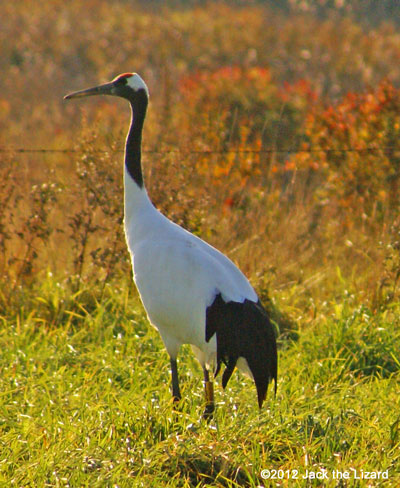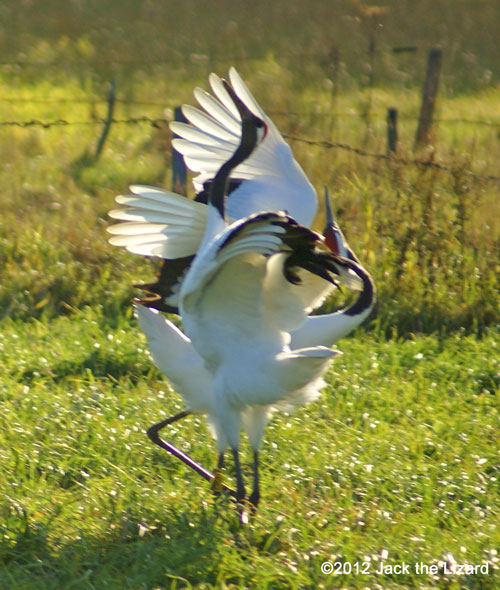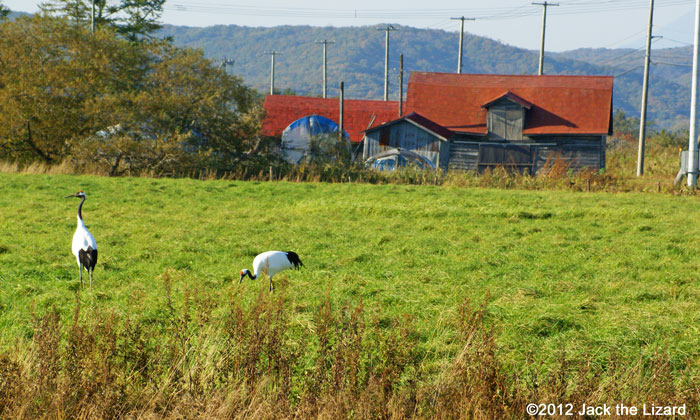
|
|
|
|
Reviving the Crane
|
Just as the endangered species act protects threatened and endangered wild species in U.S.A., rare and endangered animals and plants are protected by the Law for the Conservation of Endangered Species of Wild Fauna and Flora in Japan. Under this law 87 species are now carefully monitored and their habitats are preserved in the wild. Breeding programs are also operated on 48 species among them. The Kushiro division of the Ministry of the Environment has been in charge of recovering programs of 5 species of birds, Red-crowned Crane, Blakiston’s Fish Owl, Tufted Puffin, White-Tailed Eagle and Steller’s sea eagle. Such recovery plans often promote the protection of their habitat and other smaller species live next to them as well. As all 5 birds are associated with water, not only water quality of rivers and ocean but wetlands and woodlands along with are also important area to preserve. The operation for Red-crowned Crane is a good example for those protection. |
|
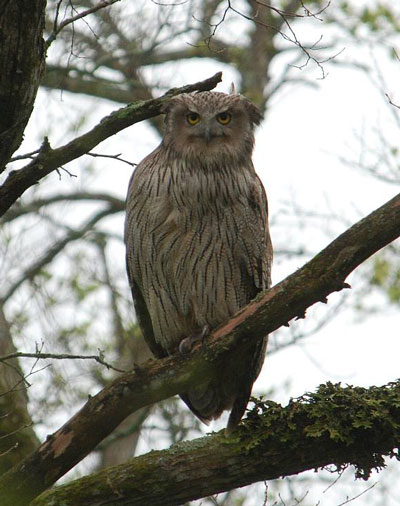
Blakiston’s Fish Owl
(The image provided by Kushiro-shitsugen Wildlife Center)
|
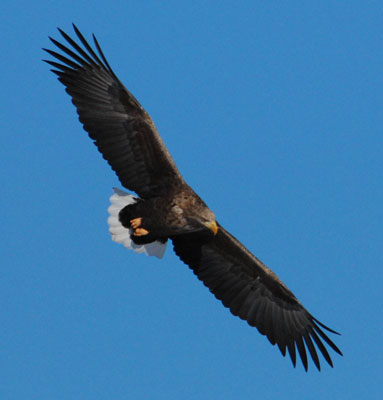
White-Tailed Eagle
(The image provided by Kushiro-shitsugen Wildlife Center)
|
|
Red-crowned Cranes were hunted for meat during the Meiji era (1868-1912), then the population continued decreasing because of habitat loss during the Taisho era (1912-1926), at that time only 12 cranes were left in the wild. Suddenly 33 birds were found in 1952 and local people had started feeding them during the winter. Since then both the local people and the government have been protecting the cranes and eventually the population comes back to 1300. |
||
|
Not only the effort of the locals, but the condition of their habitat was also the reason why Red-crowned Cranes could survive. The key factor was the springs flowing at the edges of the wetland. These springs do not freeze during the winter and keep supplying water regularly into the wetland. During the winter it was hard for the cranes to find food, however the cranes could eat small fish such as loaches gathering around the springs. As the population of the cranes passed 1000, the first stage of the recovery plan appeared accomplished. However the population would easily collapse if the human intervention stops now. Wildlife management and health officer, Koji Ono at the Kushiro division explains the reason, “They are not totally independent. Almost all the cranes depend on the food human provide during the winter. Probably they cannot make it through the winter without human hands. I do not think that their condition is truly stable.” |
|
|
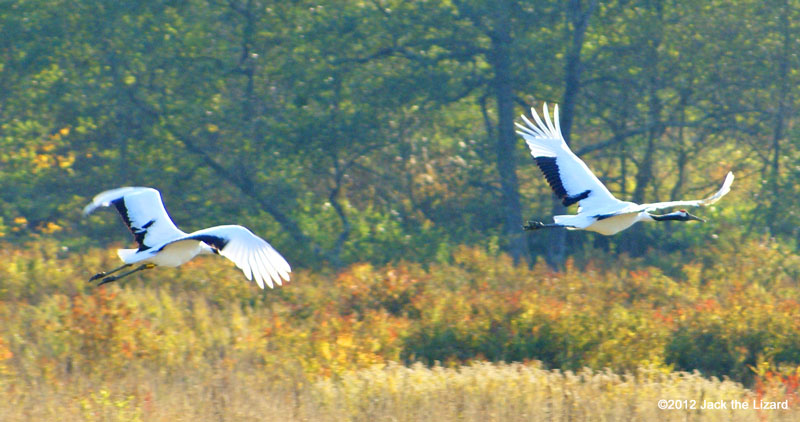
Red-crowned Crane
|
Red-crowned Crane fly over Tokyo Sky
|
In the middle of 1850’ Japanese Ukiyo-E artist Utagawa Kimimaro depicted Red-crowned Cranes in his paintings “One Hundred Famous Views of Edo”. Two cranes appeared in the No.103 picture for winter scenes. This paint suggests that once the cranes were flying over the sky in Tokyo which was used called Edo. Now the cranes are only observed in the limited range of the East Hokkaido. According to Ono, they never have flew over central mountains of Hokkaido to reach further south. Sooner or later we have to find new breeding and over wintering grounds for the cranes because of the shortage of appropriate breeding environment and increase of the dependence on human during the winter. The epidemic disease such as avian influenza also could wipe out large amount of the population. In addition that recently the cranes cause a problem on the local farmlands by eating dent corns which are food for livestock in early spring. “There are some conditions we have to consider before introducing the cranes to new environment such as whether they are able to find food permanently all year long by themselves, how they should be transferred and the impact of the introduction to new habitat. On top of that we must get consensus from the local in which the cranes will be released. It is not easy to find the proper places even within Hokkaido.” said Ono. This reintroducing plan extends from the South Hokkaido to Honshu Island in future to stabilize their population in Japan. |

Red-crowned Crane
|
Red-Crowned Cranes
|
Other than Japan Red-Crowned Cranes breed and over winter in China, Korean peninsula and Russia. The total population is only 2800. As this bird is omnivorous, the diets includes plants, small fish such as masu salmon and Ninespine stickleback, crustacean such as signal crayfish and palaemon( the family of shrimp), mollusk such as Eastern Asiatic freshwater clam and big-ear radix, aquatic insects such as stoneflies and caddisfly. Ono has been studying and protecting water birds. He had fallen to the sea while he was observing the colony which was formed at the edge of the cliff. Studying wild birds is sometimes dangerous in deed. |
|
